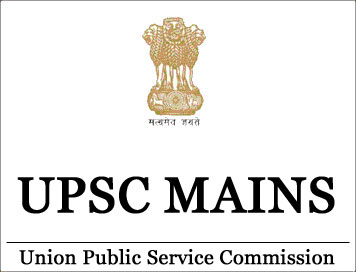(HOT) UPSC Current Affairs 2025 PDF
NEW! The Gist (NOV-2025) | E-BOOKS
(Download) UPSC IAS Mains Exam 2017 - ANTHROPOLOGY (Paper-1)

(Download) UPSC IAS Mains Exam 2017
ANTHROPOLOGY (Paper-1)
Exam Name: UPSC IAS Mains Anthropology (Paper-1)
Marks: 250
Time Allowed: 3 Hours
SECTION – A
Q1. Write short notes on the following in about 150 words each.
(a) Bilincal and bilateral descents.
(b) Difference between religion and magic.
(c) Basic tenets of structural-functionalism.
(d) Non-verbal communication.
(e) Questionnaire.
Q2.
(a) Discuss the development of the concept of cultural in
Anthropology.
(b) Elucidate the determinants of kinship terminology.
(c) Discuss the Different forms of preferential marriage with suitable examples
from tribal societies in India.
Q3.
(a) Discuss the different traditional forms of religion in
tribal societies.
(b) Mention the characteristics features of band with suitable examples.
(c) With the help of appropriate example, explain the various forms of exchange
system.
Q4.
(a) Explain Ruth Benedict’s patterns of culture.
(b) Elucidate the basic characteristics of anthropological fieldwork methods.
(c) Critically examine the Stewardian view of neo-evolutionism.
Printed Study Material for IAS PRE cum Mains General Studies
SECTION B
Q5. Write notes on the following in about 150 words each.
(a) Hardy-Weinberg Law.
(b) Sallent features of Mesolithic culture
(c) Concept of race
(d) Age at menarche
(e) Anthropology and designing of equipments.
Q6.
(a) Define Anthropology. Describe the major branches of
Anthropology elaborating on any one branch.
(b) Bring out the comparative anatomical features of man and apes. Discuss their
evolutionary significance.
(c) What are dating methods? Discuss one absolute method and one relative
methods in detail.
Q7.
(a) Briefly describe the various methods used in the genetic
study of man.
(b) Discuss the responses and acclimatization to high altitude stresses.
(c) Describe the biological and socio-ecological factors affecting fertility and
mortality.
Q8.
(a) What are the methods of personal identifications?
Critically examine how personal identification helps in criminal investigations.
(b) Describe the various methods of studying growth highlighting their merits
and demerits.
(c) Discuss Sheldon’s method of somatotyping.


